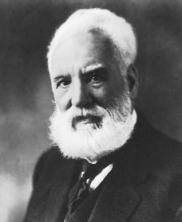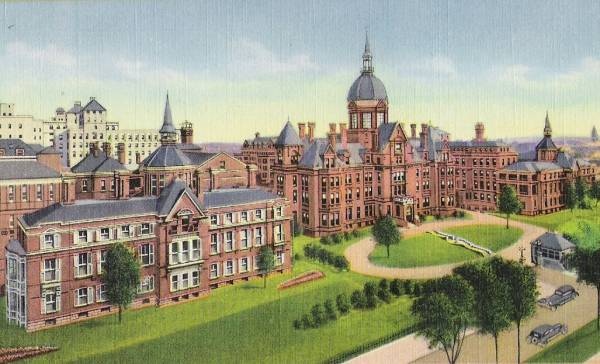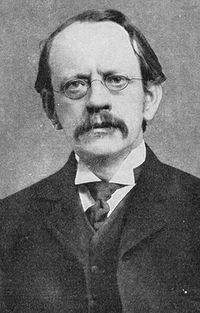19th Century Science
AP Euro is Good
The Internal Combustion Engine
Fired by gas and air, the first internal combustion engine was fired by gas and air. The main problem was the the only viable fuel source at the time of its invention was gas, which was extremely had to utilize with 19th century technology. The breakthrough came in the form of petroleum. By the end of the nineteenth century, some rail lines and naval fleets began to adopt the internal combustion engine as their main source of energy. Improvements to the engine made it suitable for light forms of locomotion, opening the way for automobiles as well as airplanes. Petroleum’s presence had long been known, but hardly used. It had been utilized as a lubricant as well as for fueling some oil lamps, but not too much else. With the advent of the internal combustion engine and the mass production of the Ford Model T just after 1900, the demand for petroleum skyrocketed, and more and more began to be unearthed. The development of the internal combustion engine and its mass production, as well as the exploitation of petroleum, put the capstone on the Second Industrial Revolution. The modern world that we live in today is the product of, and the continuation of, the discovery of petroleum’s efficacy at powering engines for locomotion.
Electricity, theTelephone, the Radio, and New Industrialism
Though civilizations had been aware of electricity as a shocking force that could travel through conductors since 2750 B.C in Egypt, little was made of it until the 19th century. In the 17th and 18th centuries electricity began to be hypothesized about, mostly via its relation to magnetism and positive/negative currents. In the 18th century electricity began to be harnessed in the sense that people were generating it ultimately to shock themselves or spin a needle. By the 1870’s a commercial viable electrical generator had been created using rotational forces to create charge. Soon, coal began to be used to power generators that were efficient enough to power entire districts. Towards the end of the century, Scotchman Alexander Graham Bell had invented the telephone, though individual phones had to be directly linked, and Italian Guglielmo Marconi had mastered the long distance transmission of radio waves. The revolutionary qualities of these discoveries can not be understated, nor are they anything less than explicit if one takes a look around. Electricity became used for lighting, a phenomenon that literally doubled the productivity in many places. It was almost unbelievable at the time how revolutionary it was that any work done during the day could now be done at night with electricity. Additionally, electricity began to be used in locomotion as it powered trains, and also modernized manufacturing through the development of the conveyor belt. For eastern European countries like Russia, electricity was used to spring society in to the industrial age. This was especially the case in countries that lacked efficient supplies of coal.
Public Health Reform and Medical Schools
As scientists and doctors began to uncover some of the possibilities of modern science and medicine, it became easier to lay the groundwork for a cleaner society. Besides increasing smog levels and the dirtying of cities, one of the biggest concerns to public health was the water supply. After the cholera epidemics in the 1840’s and 1850’s that were deemed to have originated from contaminated wells, more concern was given to preventative medicine and sanitation. Even though the attempt to clean the water happened just before Louis Pasteur’s discovery of germs, the movement was given validation and continued to accelerate as the century progressed. With the fermentation of new scientific thinking and medical progress, a great demand developed for professionals who could continue off of the centuries earlier developments. Organizations founded in the 19th century such as the British Medical Association in 1832, the American Medical Association in 1847, and the German Doctors society in 1872 had been training doctors, but in a fashion that was anything but standardized. Johns Hopkins University in Maryland, however, set the new standard for medical training by standardizing curriculum, certifying graduates, and providing stable access to labs for high profile students. The practices of medicine and sanitation still had a long ways to go, but made major breakthroughs towards the end of the 19th century.
Louis Pasteur and the Disintegration of Spontaneous Generation
For thousands of years humans had no accurate conception of the building blocks of life. Creationism had instilled in people an idea of absolute forms in which everything was exactly what it was, with no building blocks. Before French chemist Louis Pasteur (1822-1895),blew the lid off this theory, people held an idea of spontaneous generation. Spontaneous generation meant that everything life simply existed. Without the ability to see individual cells, even renowned scientists believed that maggots, for example, spontaneously generated from the corpses of dead animals. Pasteur, being credited with the discovery of germs and microorganisms, made his breakthrough with a familiar concept to europeans– fermentation. He created two flasks filled with a nutrient broth, and the flasks had extremely narrow and ornate necks that completely blocked particles from entering. The flasks were then placed in typical fermentation conditions, and to the surprise of everybody, nothing fermented and there was no change. When the flasks were broken open, fermentation began to take place. This proved that the small lifeforms responsible for fermentation did not generate spontaneously in the broth, but that they came from particles in the surrounding environment. This finding produced a theory that today is common sense: life comes from other life, and only other life. This discovery was the basis for germ theory and major sanitation reforms to come. Pasteur went on to invent a process to cleanse milk and wine of the harmful bacteria they contained. This process, which came to save hundreds of thousands of lives, fittingly became known as pasteurization.
Anesthesia and Antiseptics
Most know that surgery pre-anesthesia was possibly the most grueling and painful process in the entire world– not to mention the most dangerous. If one could endure the pain without going into shock or cardiac arrest, then a long and unsure battle was sure to be fought with infection. Tagging off of Pasteur’s discoveries, Joseph Lister (1827-1912), an Englishman, figured that the same kind of bacteria could theoreticcaly ferment inside of injuries as they did in broths. He used a newly discovered cleanser, carbolic acid, to disinfect the wounds of those in surgery wards. The results were stunning. Most people were completely cured of the infection that was being called gangrene. This drastically increased the efficacy of surgery in the 19th century. What was missing though was a way to make surgery for viable, and quite frankly, less scary. Alcohol and opium had been used to dull the senses and calm the patients, but they did not allow for the deep state of unconsciousness to free the doctors to operate. By the mid 1850’s chloroform came to prominance as a way to treat patients, and remove some of the horror from surgery. These simple breakthroughs in the the hospitals paved the way for equal reforms outside of the hospitals in the fields on sanitation and disease prevention. Stick around because the transformation that took place was a huge medical breakthrough, though it was made possible by culture and politics.
Vaccination
Louis Pasteur’s theory of microorganisms being the mechanism behind fermentation guided European society into taking a different persecutive on disease. The existence of germs and the possibility of eradicating them via pasteurization lit a fuse that sparked scientists to attempt the prevention of other diseases. Scientists began a hunt for the microorganisms that were responsible for diseases, and for certain compounds that would render the microorganisms ineffective. Continued advances in microscope technology aided scientists in this quest and in 1885 a rabies vaccination was produced. Before the turn of the twentieth century, other vaccines were produced for many of the age old plagues of European society, including diphtheria, typhoid, cholera, and even the the bubonic plague.
Gregor Mendel and Genetic Theory
Gregor Mendel (July 20, 1822 – January 6, 1884) was an Austrian Monk who studied philosophy at the University of Olomouc and the University of Vienna before committing himself to a life of religious austerity. At St. Thomas Abbey, in the highlands of the Czech Republic, Gregor Mendel took up the breeding to pea plants. By identifying the male and female sex organs of the pea plants, Gregor Mendel was able to selectively breed certain plants with others in a controlled environment. His results were shocking. With every cross, Gregor Mendel noticed a distinct ratio between plants with given characteristics. The offsprings were not mixes of their parents, nor were they evenly distributed 50/50 as common sense may have suggested. Instead he noticed traits that could only be explained by dominant characteristics and recessive characteristics. He noticed that for a given trait, stem height, petal color, pea size, there were several distinct possible outcomes. Through trial and error and many generations of breeding, he was able to determine which characteristics were dominant to others. His 3:1 ratios in many of his crosses lead him to conclude that characteristics must be coded for by genes, and that for each characteristic, or each gene, a plant carried two alleles– two different codes for the same characteristic. If plant height is the trait in consideration, lets say that there are two possibilites: Tall and short. For this characteristic the possible alleles would be Tall (T), and short (t). With tall (T) being dominant and short (t) being recessive, a plant can have three possible combinations of alleles. TT, Tt, or tt. With T as the dominant allele, both TT plants and Tt plants would be tall, while only tt plants would be short. The concept of two alleles makes sense if you consider one allele being given to an offspring by each parent. Mendel’s work on genetics can be elegantly displayed in Punnett squares, which so all possible genotypes for the offspring of two parents. This work gave Darwin’s theory of evolution both biological and mathematical support. If it coud be proved that traits are passed down genetically, then it could also be proved that over time the same genetics could lead to genetic variation and speciation.
Charles Darwin and Evolutionary Theory
Charles Darwin–12 February 1809 – 19 April 1882– was an English naturalist and arguably the founder of modern biology. Under immense pressure from his family to pursue a career in medecine, Charles fled upon the HMS Beagle on a five year voyage around the world. Originally interested in geology, Charles Darwin was primarily focused on how the landscape of Earth had evolved, not necessarily the species that inhabited it. On his famous expedition to the Galapagos islands far off the coast of Ecuador, Charles Darwin was struck by ostensible patterns not in the landscape, but in the animals on the islands. He noticed extremely similar variations or certain animals, especially finches, and hypothesized that such differences in in outwardly similar species had to be due to a form of common ancestry. His work coalesced into a theory that over thousands of generations, animals that are more properly suited to their environments have a better chance of reproducing and delivering their traits to their offspring. Over these generations, Darwin argued, favorable traits will be preserved in place of unfavorable ones. This viewpoint differed with other evolutionary theorists who believed in the Lamarckian theory that traits acquired in the lifetime of an animal are passed down to their offspring. The classic fallacy was that an animal that grew large and muscular would mass that size straight to its offspring. In his work, On The Origin of Species, Darwin solidified a theory in which change was gradual and dependent on genetics which remained unchanged over the course of an animals life, regardless of how its physique changed over time. This principal of natural selection producing gradual change provides the basis for the existence of all biological functions and the development of life on earth. It is often said that nothing in Biology makes sense unless put into the context of evolution and natural selection. These two terms are the be all and end all of the genetics that are responsible for the human race
Atomic Structure
Prior to the scientific advances made in the nineteenth century, all thought about the structure matter was purely speculative. Atomic theory came with the acceptance of elements as the pure substances that composed matter. At first, anyone’s guess was as good as another’s as to how elements themselves were composed. Some basic assumptions were made by John Dalton, an English chemist who died in 1844, as to the existence of atoms as the basic unit of all matter. From there, more assumptions were made that elements themselves must be neutrally charged. Such a basic hypothesis was proved in laboratories when pure substances were measured as exhibiting no charge and not showing attraction to certain magnets. In 1856 a British Chemist named J.J. Thomson discovered the presence of negatively charged parts of atoms when he hypothesized that there were actually smaller particles in existence that were responsible for the composition of atoms. He discovered electrons by submitting atoms to magnetic waves, and testing to see if there was any interaction via a paddel that would spin if the magnetic field was disrupted by a negative charge. When he was met with a positive result, it was concluded that electrons existed within atoms, and that there must be an equivalent group of positively charged subatomic particles to maintain elemental neutrality. This discovery laid the foundation for the formal discovery of protons, and neutrons, as well as the nucleus centered theory of atoms
The Periodic Table of the Elements
While precursors to the Periodic Table existed prior to its official creation by Dmitri Mendeleev in 1869, the Russian Chemist is credited with its discovery. The Periodic Table was on one hand the culmination of centuries of research in rudimentary chemistry and alchemy, and on the other hand, the birth of modern science as the world knows it. The Periodic table was a breakthrough because of the predictive powers that it provided scientists with as the twentieth century approached. With the Second Industrial Revolution that thrived upon petroleum and engineering of chemicals, the Periodic Table organized known chemistry in a way that allowed scientists to group elements by common properties and predict the existence of other elements based off of reoccurring trends. The trends that were uncovered with the categorizing of elements based off of mass and proton number provided an unlimited amount of new research to be conducted in order to explain the trends which were on the one hand conspicuous to chemists, but on the other hand mysterious in their origins. Mendeleev organized elements based on their mass– a system which was later revised, though not subject to revolutionary change.
-
Recent Posts
Archives
Categories
Meta












